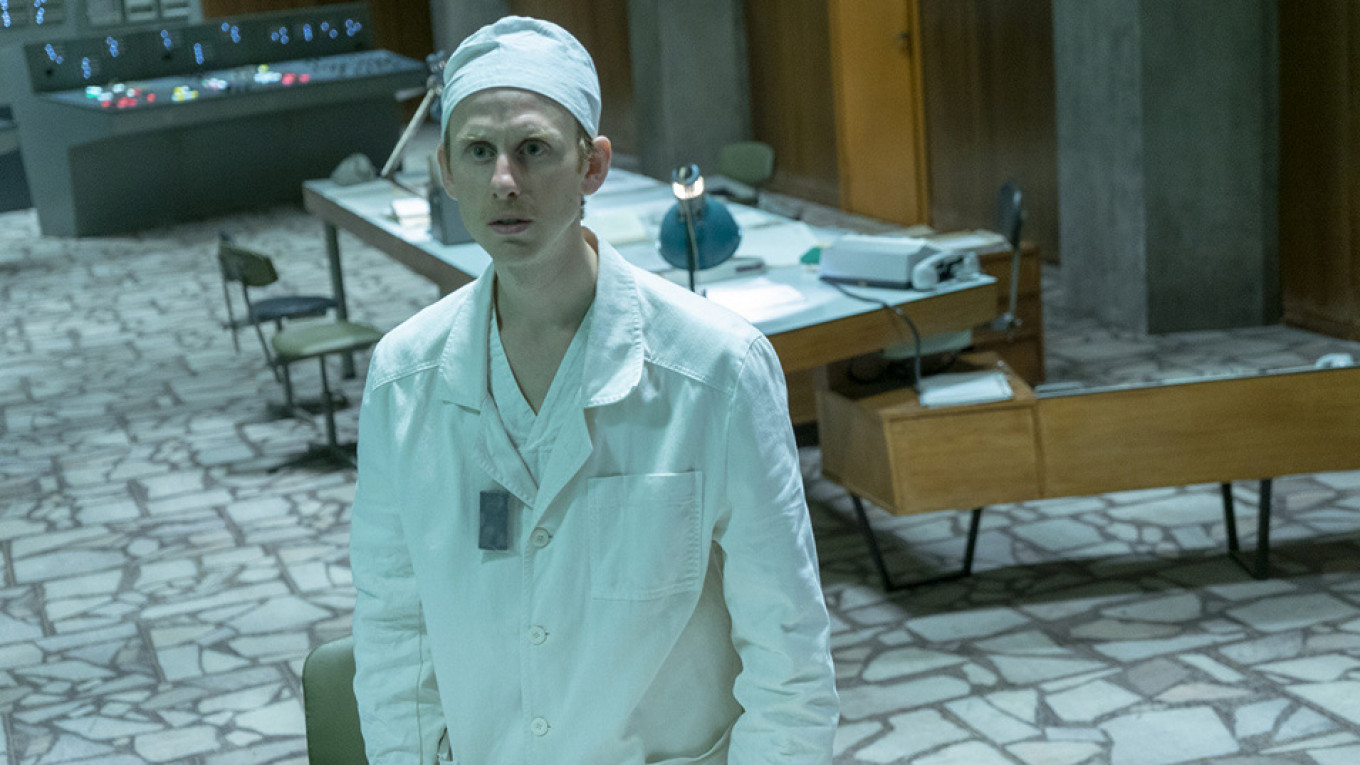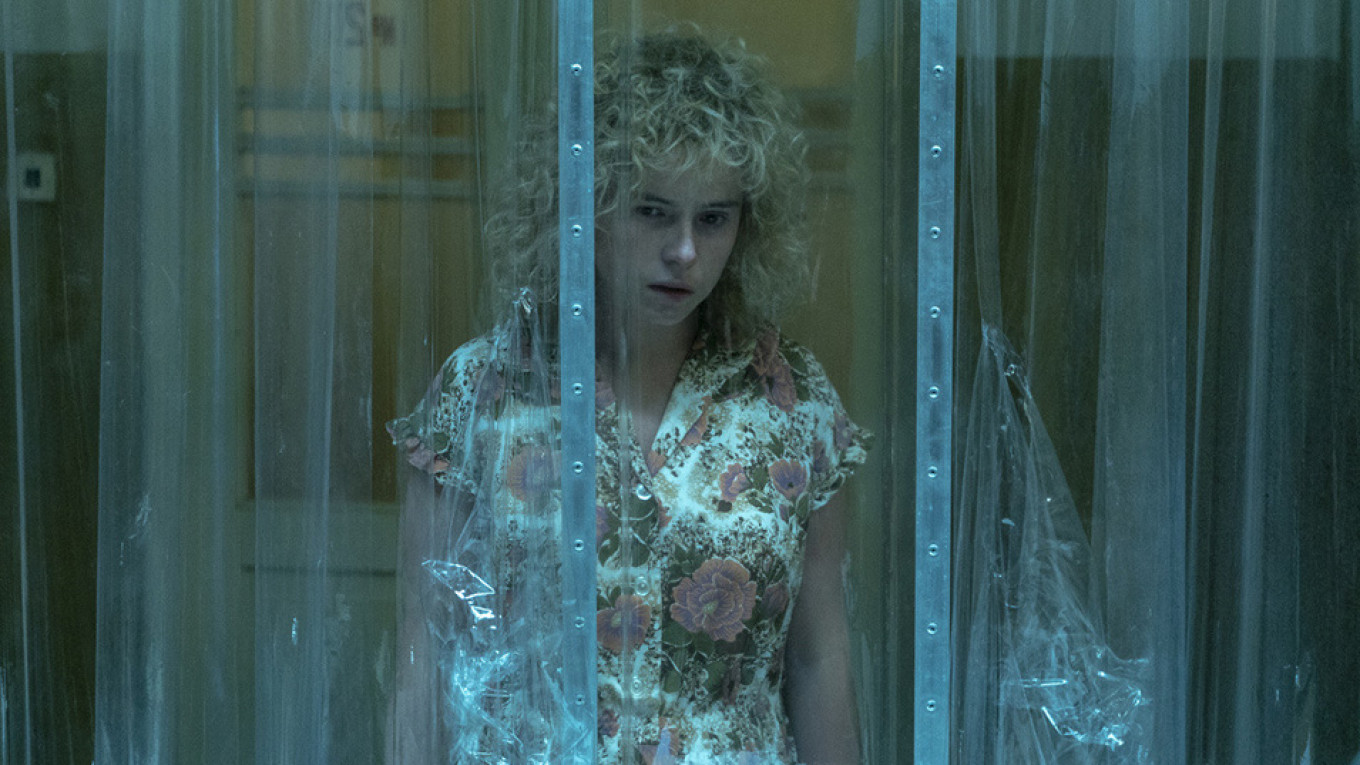HOLLYWOOD—With awards season around the corner, the mini-series “Chernobyl” continues to gain momentum in the entertainment world.
Distributor HBO, now a unit of the AT&T telecom giant, is putting its muscle behind the series, giving it a competitive edge in the Emmy competition. Nominations will be announced on July 16.
Jared Harris, who plays scientist and academic Valery Legasov, and Stellan Skarsgard, in the role of deputy chairman of the Council of Ministers Boris Scherbina, have been getting high praise for their interpretation of creator, writer and producer Craig Mazin’s “Chernobyl.” The acting duo also are considered strong awards candidates.
Just like the Chernobyl disaster itself, the mini-series produced by British network Sky for HBO distribution is creating controversy. In America the show has received higher ratings than hugely popular “Game of Thrones.”
“The series has become a bone of political contention, attacked as ‘propaganda’ in Russia,” says Serge Rakhlin, a journalist who left the U.S.S.R. for the United States after the disaster.
“An event which shook the now-defunct Soviet Union is once again shaking the world,” he said, adding, “In some ways the repercussions of HBO’s ‘Chernobyl’ mirror those of the actual disaster in how it has evoked divergent reactions in East and West some 30-plus years ago.”
Writer and producer Mazin has been totally immersed in “Chernobyl” from its inception to its presentation to worldwide audiences. As the series is heading into the competition arena, he sat down with The Moscow Times to talk about the series and how it was made.
(Answers have been edited for clarity and length.)
Where did you get the idea for this TV project?
“It all started with a book. An amazing book called ‘Voices from Chernobyl.’ It was written by Svetlana Alexievich, a Nobel Prize-winning author. It is a compendium of first-person accounts of all sorts of people who were there—from party officials to a father who’s just trying to get his family heirlooms from his apartment before they have to leave. It’s gorgeous. And the more I read, the more I became obsessed. So, I went to HBO and SKY.”
 Chernobyl / HBO
Chernobyl / HBOHow and why did Chernobyl happen?
“Why it happened is a shocking story. How it happened is a shocking story. But everything that happened after the explosion in terms of the people is the most heartbreaking and moving story. The bravest, most courageous and loving people in the world as far as I’m concerned…I mean, firemen were sent there…They thought that the roof was on fire. And they get there at some point in the middle of that night. And they put the fire out as best they could. It is absolutely heart-wrenching and beautiful. I want their story to be known. I want people to know as many of their names as possible. I want people to know their story. And I want people to see above all what happens when we don’t tell the truth.”
When do we find out the story behind the story?
“At the end of the (episode) five. That’s what five is about. I just started to read about what happened and why. And the more I read, the more I found every single aspect of the story to be captivating and astonishing and jaw-dropping. Just when you think it’s gotten better, it gets worse and then better and then worse.”
When did you become aware of this incident?
“I was 15 when Chernobyl exploded. There was a terrible accident that struck at a symbol of national patriotism and pride and it humbled the superpower. That was the explosion of the Space Shuttle Challenger. Almost exactly three months later, Chernobyl exploded.”
Did you go to Chernobyl?
“Yes, I did — once. When you are working on a program for HBO and SKY, you’re not free to do what you want. They said you can go to Chernobyl once…They (officialdom) take you to a lot of places surrounding the power plant and in the town of Pripyat that are safe to walk around for an amount of time. You can’t go [everywhere]. For example, the firefighters’ gear, which was taken off them and put in the basement of a hospital. You can’t go there. It is still radioactive. Their boots are still radioactive 33 years later. But I did walk around Pripyat. It is beautiful in its own way. Nature has reclaimed it. It’s a jungle. It’s like one of those movies.”
 Chernobyl / HBO
Chernobyl / HBOHas nature reclaimed the area?
“It took time for certain aspects of wildlife to bounce back. But now, oddly because of the lack of humans, the exclusion zone is essentially one of the largest wildlife preserves on the European continent. There are animals there that haven’t been seen in a long time.”
Did you go inside the facility itself?
“Chernobyl is a very large facility. It’s so big that when you’re there, you start to realize why the question of whether or not the reactor had exploded arose. It’s so big. You think nothing this big could do something wrong to you — like the sense of safety we have in this building. It just seems like, well, this building couldn’t hurt us. And that’s what you feel at Chernobyl. It’s a very long structure. There are reactors 1, 2, 3, and reactor 4 is gone. I got as close as reactor 3. And we walked in the pump room of reactor 3. In that room the dosimeters are going ‘beep, beep, beep.’ And they say, ‘All right, we’ll be in here for about one minute and then we should go.’ Mostly tourists are allowed outside. To go inside you have to make special arrangements with the government.”
How many people died as a result of the explosion at Chernobyl?
“This is a topic of great debate, and at the end of the series, in the epilogue, we say we can never truly know. But most estimates are between 4,000 and 90,000 people. There are some estimates that go as high as a million people. Here’s the problem: how do you decide what killed someone 10 years after Chernobyl if they get cancer? Was it the fact that they smoked? Was it the fact they drank too much? Hard to say.”
Finally, did you have any interference while working in Russia?
“There hadn’t been any interference. We did shoot briefly in Moscow for some establishing shots, and that was permitted. We never really had to ask much of them. I will say that this is a story where every hero, or villain, is Ukrainian or Belarussian or Russian or Armenian because they were Soviet citizens.”






